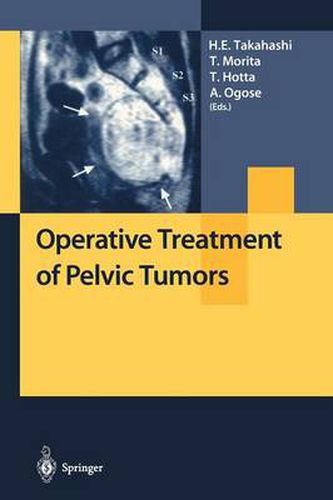Readings Newsletter
Become a Readings Member to make your shopping experience even easier.
Sign in or sign up for free!
You’re not far away from qualifying for FREE standard shipping within Australia
You’ve qualified for FREE standard shipping within Australia
The cart is loading…






This title is printed to order. This book may have been self-published. If so, we cannot guarantee the quality of the content. In the main most books will have gone through the editing process however some may not. We therefore suggest that you be aware of this before ordering this book. If in doubt check either the author or publisher’s details as we are unable to accept any returns unless they are faulty. Please contact us if you have any questions.
This book presents our experience in the operative treatment of bone and soft-tissue tumors arising in and around the pelvis, from 1970 to 1999 in the Department of Orthopedic Surgery at the Niigata University Medical Hospital. Histological diagnoses included both benign and malignant tumors. Surgical plan ning was difficult to perform in our early experience in operative treatment, when only angiography and barium enemas were in use. In the meantime, computed tomog raphy scanning and magnetic resonance imaging became available. Subsequent improvement in the quality of these images made three-dimensional surgical plan ning for pelvic tumor removal much easier. Such progress in diagnostic methodolo gies, together with advancements in microsurgical techniques, methods of irradiation, and various adjuvant chemotherapies has led to significant improvements in the treat ment of pelvic tumors. Furthermore, these advancements were enhanced by the avail ability of various conventional and custom-made endoprostheses, plates and screws, spinal instruments, and external fixators made of 3161 stainless steel, titanium, high density polyethylene, and ceramics. Because sacral tumors are so silent and symptomless, they may grow to a large size and be difficult to excise. Removal of sacral tumors might make subjective symptoms worse because the sacrum contains the cauda equina. Excision of a tumor that involves the ilium and sacroiliac joint may interrupt the structural stability of the pelvic ring. A tumor affecting the hip joint may require reconstruction to re-establish the func of the hip and to provide stability for gait after operative treatment.
$9.00 standard shipping within Australia
FREE standard shipping within Australia for orders over $100.00
Express & International shipping calculated at checkout
Stock availability can be subject to change without notice. We recommend calling the shop or contacting our online team to check availability of low stock items. Please see our Shopping Online page for more details.
This title is printed to order. This book may have been self-published. If so, we cannot guarantee the quality of the content. In the main most books will have gone through the editing process however some may not. We therefore suggest that you be aware of this before ordering this book. If in doubt check either the author or publisher’s details as we are unable to accept any returns unless they are faulty. Please contact us if you have any questions.
This book presents our experience in the operative treatment of bone and soft-tissue tumors arising in and around the pelvis, from 1970 to 1999 in the Department of Orthopedic Surgery at the Niigata University Medical Hospital. Histological diagnoses included both benign and malignant tumors. Surgical plan ning was difficult to perform in our early experience in operative treatment, when only angiography and barium enemas were in use. In the meantime, computed tomog raphy scanning and magnetic resonance imaging became available. Subsequent improvement in the quality of these images made three-dimensional surgical plan ning for pelvic tumor removal much easier. Such progress in diagnostic methodolo gies, together with advancements in microsurgical techniques, methods of irradiation, and various adjuvant chemotherapies has led to significant improvements in the treat ment of pelvic tumors. Furthermore, these advancements were enhanced by the avail ability of various conventional and custom-made endoprostheses, plates and screws, spinal instruments, and external fixators made of 3161 stainless steel, titanium, high density polyethylene, and ceramics. Because sacral tumors are so silent and symptomless, they may grow to a large size and be difficult to excise. Removal of sacral tumors might make subjective symptoms worse because the sacrum contains the cauda equina. Excision of a tumor that involves the ilium and sacroiliac joint may interrupt the structural stability of the pelvic ring. A tumor affecting the hip joint may require reconstruction to re-establish the func of the hip and to provide stability for gait after operative treatment.